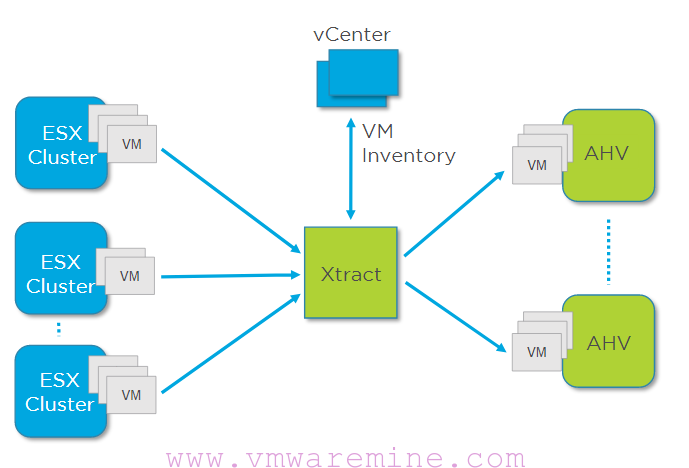Today, third part, this time ESX(i) host has 10 pNIC’s (1Gbps) on Standard Switches (vSS)
Scenario #1 – 10 NIC’s (1Gbps – 2 x quad port adapters and 2 on-board ports) – standard Switch for each type of traffic
In scenario I have to design network for 5 different type of traffic. Each of the traffic has different vLAN ID which will help to utilize all NIC’s for more than one traffic, optimize pNIC utilization and have network secured.
- mgmt – VLANID 10
- vMotion – vLANID 20
- VM network – vLANID 30
- VM Backup – vLANID 40
- DMZ – vLANID 50
When you don’t have Enterprise Plus vSphere license the only way to configure virtual networking is vSS. In a diagram below, mgmt (Service Console or vmk port) and vMotion were placed on common vSwitch0 with active passive approach (in vSphere 4 vMotion can use only on vmnic), Active and Stand by state is set in a portgroups. On physical ports, where both pNICs are connected two vLANs must be trunked (vLAN 10 and 20) cause we need both network available on each port, such as in case of failover – traffic from both networks will carry over one port.
[box type=”warning”] Make sure that connection between physical switches are configured to carry all VMware specific traffic.[/box]
Other networks, have their own dedicated vSwitch’es, each vSwitch has at least 2 NICs connected to two physical switches and all vmnics are in Active state (see table below for details). Below configuration follows virtual networking best practices in terms of:
- hardware redundancy – 2 physical switches, at least two pNIC per vSwitch,
- failover – each virtual network has at least two vmnics available
- security – separate vLAN for each traffic (e.g vMotion is not encrypted), vSwitch security options set to Reject
- capacity – each network has preserve bandwidth capacity (sending traffic over separate physical NIC)
vSwitch settings (applicable for all vSwitches)
- Promiscuous mode – Reject
- MAC address changes – Reject
- Forget Transmits – Reject
- Load balancing = route based on the originating virtual port ID (default)
- Network failover detection – link status only
- Notify switches – Yes
- Failback – No
| vmnic | location | vSwitch | portgroup | state | vLANID | pSwitch |
| vmnic0 | on board | vswitch3 | backup VM | active | 30 | Switch1 |
| vmnic1 | on board | vswitch3 | backup VM | active | 30 | Switch2 |
| vmnic2 | quad NIC 1 | vSwtich0 | mgmt/vMotion | active in mgmt passive in vMotion | 10, 20 | Switch1 |
| vmnic3 | quad NIC 1 | vSwitch1 | DMZ | active | 40 | Switch1 |
| vmnic4 | quad NIC 1 | vswitch2 | VM network | active | 50 | Switch1 |
| vmnic5 | quad NIC 1 | vswitch2 | VM network | active | 50 | Switch1 |
| vmnic6 | quad NIC 2 | vSwtich0 | mgmt/vMotion | active in vMotion passive in mgmt | 10, 20 | Switch2 |
| vmnic7 | quad NIC 2 | vSwitch1 | DMZ | active | 40 | Switch2 |
| vmnic8 | quad NIC 2 | vswitch2 | VM network | active | 50 | Switch2 |
| vmnic9 | quad NIC 2 | vswitch2 | VM network | active | 50 | Switch2 |
If you have questions regarding particular case scenario, put question in comments and I will be glad to help you
Next post, further this week, will describes scenario with 10 pNIC but using vSS together with vDS (mixed virtual networking configuration approach)
UPDATE:
Network configuration 10 x 1Gbps for vSphere 5.1
Above is my recommended network configuration for vSphere 5.1 with Enterprise Plus license. As you know one of the cooles new features in vSphere 5.1 is backup possibility of the Virtual Distributed Switches. In case you lost vCenter Database and there is no way to restore it you can easily restore vDS config into new DB – awesome. No risk of loosing network after vCenter DB lost and all network types including mgmt vMotion can run on single Virtual Distributed Switch. All vLAN has to be trunk on all physical switch ports.
Network configuration 10 x 1Gbps for vSphere 5.x and vSphere 4.x
My recommended network configuration for vSphere 5.X and vSphere 4.X with Enterprise Plus license. In above config vMotion and mgmt run on Virtual Standard Switch and Active/Passive vmnic configuration, where Storage, VM and FT traffic utilize Virtual Distributed Switch. The reason of heaving mgmt traffic on vSS is, in case of vCenter database lost you wont loose possibility to change ESXi/ESX host networking (N/A on vSphere 5.1 and above).
[box type=”info”] See links below for different networking configuration
ESX and ESXi networking configuration for 4 NICs on standard and distributed switches
ESX and ESXi networking configuration for 6 NICs on standard and distributed switches
ESX and ESXi networking configuration for 10 NICs on standard and distibuted switches
ESX and ESXi networking configuration for 4 x10 Gbps NICs on standard and distributed switches
ESX and ESXi networking configuration for 2 x 10 Gbps NICs on standard and distributed switches[/box]








What about the “DMZ” network, if you need a fully NEN certified DMZ network? In that situation you need a separate PCI NIC adapter (separate bus) to split the network traffic, in case you combine 1 dual/quart port adapter with LAN/DMZ connections it’s “possible” to sniff the traffic/packets. To configure this redundant you need to add a second physical NIC adapter in the host to connect the physical DMZ network switches. If you don’t need a NEN certified DMZ and you mean “DMZ” as a different subnet with VLAN ID.. why don’t you add the two DMZ network adapters to… Read more »
Hey Artur. I have also one proposal. As you also marked the topic as vSphere 5 related (upgrade expected) I would recommend you to move also one NIC port from the VM network to the Mgmt/vMotion group. This decision ofc depends on number of expected VMs (related to expected nr of vmotion migrations). You will have in this case environment more prepared for vSphere 5 from vmotion perspective and 3 NICs should be standardly enough for Prod traffic. Hi Sander, I’m also not familiar with NEN security certification. Can you briefly describe it or dirrect us to some documentation? Also… Read more »
hello I have 2 pswitches Cisco 6500 series as core switches, and i have vsphere 5 with enterprise plus license. I have one esxi host with 4 PNICS, the 2 core switches are interconnected via etherchannel trunk and we are not using stacking and stack cable. Scenario-1 in the esxi host, i have created 1 vswitch and 4 pnics are attached to it. 2 pnics are connected to the pswitch1 and other 2 pnics are connected to the pswitch2. the vswitch teaming policy is selected as (Load balancing = route based on the originating virtual port ID (default)). 5 virtual… Read more »
Great Help !!! Thanks for your timely help.
I am designing Vsphere 5, with HP 3PAR and HP C7000 blade center for a bank. The network consultant told there will be a packet drop in this design, so i confused.
Thanks for your advice and quick response.
One more doubt,
With same scenario of above, if there is 2 Top of rack switches connected between ESXi hosts and core switch,
I will connect the esx hosts pnics to the top of rack switches and the top of rack switches to the core switch in mesh topology.
1- In this case, i believe there wont be any issue, just like the previous post ?
2- Do I need to enable the STP and portfast in all switches (top of rack and core switch)?
thanks
Gopi
Thank you for this informative post. Just one quick question, I thought we can not have two active connection to to pswitch from one vswitch, like the one on vm backup. I tried this without luck.
Can you explain in couple of sentences please.
Thank you in advance
Hi, I am wondering why for vSwitch0 and vSwitch1, the vmnic(s) are not being used in a running number way?
As in, vSwitch0 – vmnic2 and vmnic 3, while vSwitch1 – vmnic6 and vmnic7.
Could you please enlight me on this part? Thank you!
How will be network configuration with 10 NICs (1Gbps) with Enterprise Plus license
Lets say in the VM LAN I had 3 port groups would I want to use the Active/Standby approach or just leave all vmnics as active??